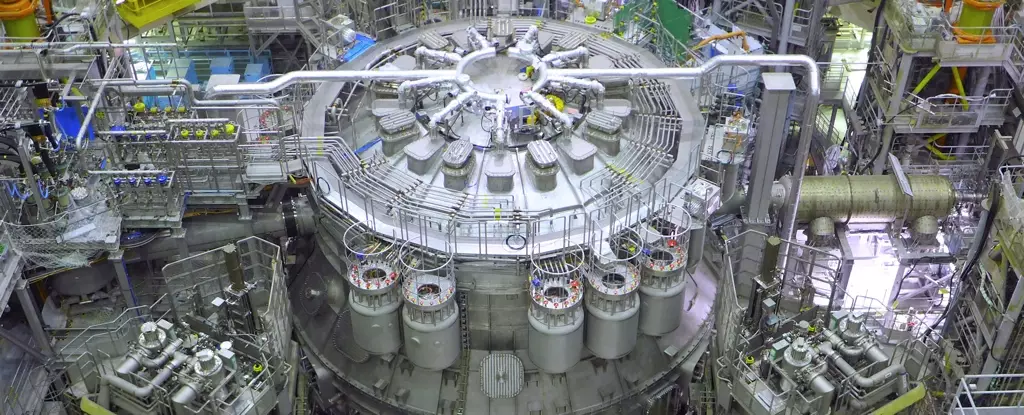The world’s largest experimental nuclear fusion reactor, the JT-60SA, was officially inaugurated in Japan on Friday, marking a significant step in the development of fusion technology. Unlike fission, which is currently used in nuclear power plants, fusion involves the fusion of two atomic nuclei, offering a potentially safer, more sustainable, and carbon-free source of energy. The goal of the JT-60SA reactor is to explore the feasibility of fusion as a large-scale, net energy-generating solution. With the potential to surpass current energy production methods, fusion could hold the key to humanity’s future energy needs.
The JT-60SA reactor is a collaborative project between the European Union and Japan and serves as a precursor to the International Thermonuclear Experimental Reactor (ITER) in France. Located in Naka, north of Tokyo, the six-story-high machine features a donut-shaped “tokamak” vessel designed to house swirling plasma heated up to 200 million degrees Celsius. It is in this extreme environment that researchers hope to achieve the fusion of hydrogen nuclei into helium, releasing vast amounts of energy in the process.
While the JT-60SA reactor is making strides towards fusion energy, the ITER project faces obstacles including budget issues, delays, and technical challenges. Nevertheless, researchers remain optimistic about achieving net energy gain through the fusion process. Sam Davis, deputy project leader for the JT-60SA, believes that the device brings us closer to realizing fusion energy. The collaboration between over 500 scientists, engineers, and 70 companies from Europe and Japan demonstrates the global effort to unlock the potential of fusion.
Fusion as a Future Energy Source
European Union energy commissioner Kadri Simson has hailed the JT-60SA as the most advanced tokamak in the world and a significant milestone for fusion history. Simson also acknowledges the enormous potential of fusion energy in shaping the energy mix of the second half of this century. Fusion holds the promise of becoming a key component in meeting future energy demands while combating climate change and reducing reliance on carbon-emitting fossil fuels.
The JT-60SA and ITER projects are not the only endeavors exploring nuclear fusion. The National Ignition Facility at Lawrence Livermore National Laboratory in the United States has achieved a “net energy gain” using a different method known as inertial confinement fusion. This approach directs high-energy lasers into a small cylinder containing hydrogen, resulting in fusion. The US government considers this achievement a landmark in the pursuit of unlimited, clean power, with the potential to eliminate the need for carbon-emitting fuels and mitigate geopolitical conflicts.
The Promised Advantages of Fusion
One of the key advantages of fusion over fission is the absence of catastrophic nuclear accidents. Unlike the Fukushima disaster in 2011, fusion reactors do not carry the same risk of meltdowns or the release of harmful radiation. Additionally, fusion technology generates significantly less radioactive waste compared to traditional power plants. These factors make fusion a safer and more sustainable long-term energy solution.
The inauguration of the JT-60SA reactor represents a significant milestone in the pursuit of fusion energy. While challenges and delays hamper the ITER project, the JT-60SA’s progress brings us one step closer to achieving net energy gain through nuclear fusion. Fusion has the potential to revolutionize the global energy landscape, offering a safe, clean, and virtually limitless power source. As research and development continue, fusion may become a key component of our energy mix, paving the way for a brighter and more sustainable future.

Leave a Reply